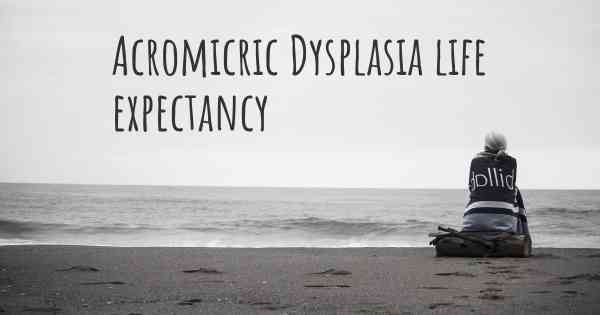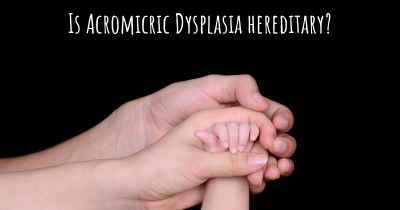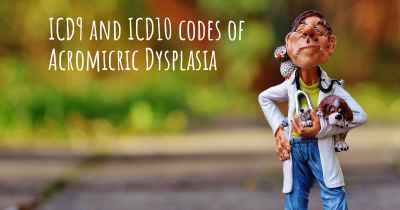What is the life expectancy of someone with Acromicric Dysplasia?
Life expectancy of people with Acromicric Dysplasia and recent progresses and researches in Acromicric Dysplasia

Acromicric Dysplasia is a rare genetic disorder characterized by skeletal abnormalities and distinctive facial features. While the life expectancy of individuals with Acromicric Dysplasia can vary, it is generally considered to be within the normal range. As with any medical condition, the prognosis depends on various factors such as the severity of symptoms and the presence of associated complications. Regular medical care, early intervention, and appropriate management of symptoms can significantly improve the quality of life for individuals with Acromicric Dysplasia. It is important for affected individuals to work closely with healthcare professionals to address their specific needs and ensure optimal health outcomes.
Acromicric Dysplasia: Understanding Life Expectancy
Acromicric Dysplasia is a rare genetic disorder that falls under the category of skeletal dysplasias. It is characterized by distinct facial features, short stature, and abnormalities in the hands and feet. This condition is caused by mutations in the ACAN gene, which provides instructions for producing a protein called aggrecan. Aggrecan is essential for the normal development and maintenance of cartilage and other connective tissues in the body.
Due to the rarity of Acromicric Dysplasia, there is limited information available regarding the life expectancy of individuals affected by this condition. However, it is important to note that life expectancy can vary significantly depending on the severity of symptoms and associated complications.
Physical Features and Health Challenges:
Acromicric Dysplasia is typically characterized by distinctive facial features, including a round face, a broad nasal bridge, a small mouth, and a prominent chin. Individuals with this condition often have short stature, with shortening of the limbs and fingers. The hands and feet may exhibit specific abnormalities such as brachydactyly (short fingers) and broad thumbs and toes.
While Acromicric Dysplasia primarily affects the skeletal system, it can also lead to various health challenges. Respiratory problems, such as obstructive sleep apnea, may occur due to the characteristic facial features and potential airway obstruction. Additionally, individuals with this condition may experience joint stiffness, limited mobility, and joint pain. These musculoskeletal issues can impact daily activities and overall quality of life.
Medical Management and Supportive Care:
As Acromicric Dysplasia is a genetic disorder, there is currently no cure. Medical management primarily focuses on addressing the symptoms and associated complications to improve the individual's quality of life. Regular monitoring by a multidisciplinary team of healthcare professionals, including geneticists, orthopedic specialists, and respiratory therapists, is crucial for comprehensive care.
Supportive care measures may include physical therapy to improve joint mobility and muscle strength, respiratory interventions to manage breathing difficulties, and orthopedic interventions to address skeletal abnormalities. Pain management strategies and assistive devices, such as braces or mobility aids, may also be recommended to enhance daily functioning.
Prognosis and Life Expectancy:
It is important to approach discussions about life expectancy in individuals with Acromicric Dysplasia with caution due to the limited available data. The prognosis can vary significantly depending on the severity of symptoms and associated complications. Some individuals may have a relatively stable health status and a near-normal life expectancy, while others may experience more severe symptoms and complications that can impact longevity.
The key to improving the prognosis and enhancing the quality of life for individuals with Acromicric Dysplasia lies in early diagnosis, comprehensive medical management, and ongoing supportive care. Regular follow-up appointments, genetic counseling, and access to appropriate interventions can help address potential complications and optimize overall health outcomes.
Conclusion:
Acromicric Dysplasia is a rare genetic disorder characterized by distinct facial features, short stature, and abnormalities in the hands and feet. While limited data is available regarding life expectancy, it is important to approach this topic with caution due to the significant variability in symptoms and associated complications. Early diagnosis, comprehensive medical management, and ongoing supportive care are crucial for optimizing the prognosis and quality of life for individuals with Acromicric Dysplasia.








